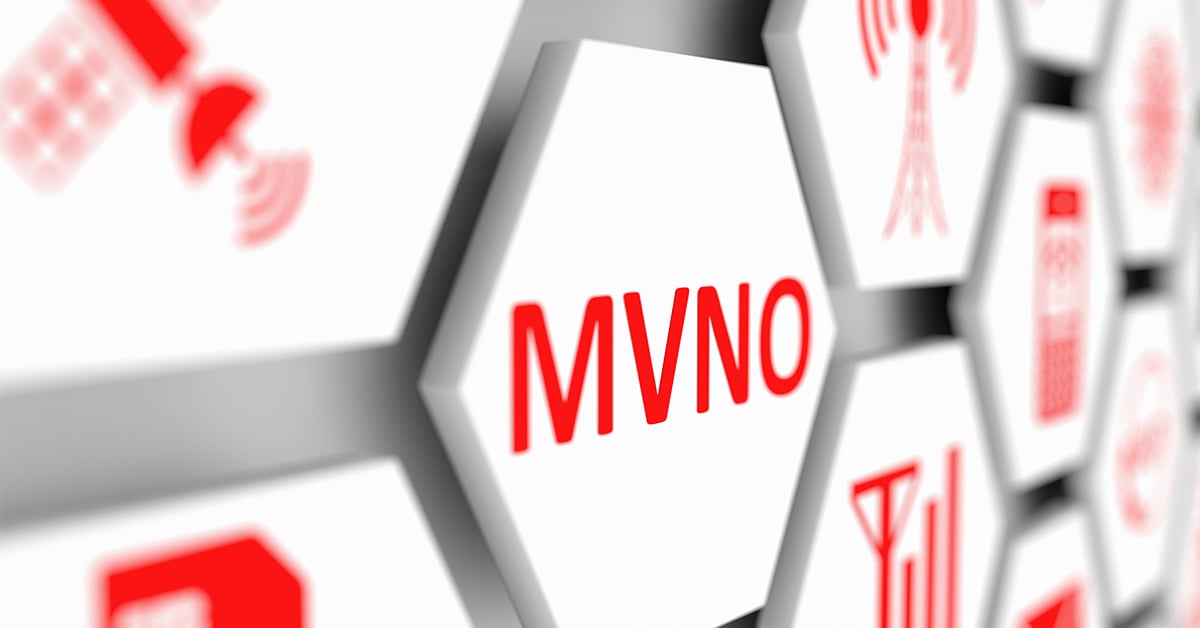The Definitive Guide to Cheap Cell Phone Plans in the US

Staying connected shouldn’t mean overspending. You can get reliable cell service starting at just $10 per month (and sometimes cheaper) thanks to something called an MVNO (Mobile Virtual Network Operator), making affordable options widely available despite average bills of $140–$150 in 2025. At RedPocket Mobile, affordable and dependable phone plans are easier to find than ever, because we’re your new ultimate cell carrier.
By choosing a low-cost provider (like RedPocket!) that fits your needs, you can enjoy the same strong coverage without the hefty monthly bill.
Frequently asked questions
Where can I sign up for a budget-friendly monthly phone plan?
Sign up directly on MVNO or budget carrier websites like RedPocket Mobile for the best deals and promotions. Many also sell services via retail partners like Target, Best Buy, or Amazon.
Which providers offer the best deals on low-cost mobile plans?
MVNOs and budget carriers frequently rank among the most affordable. The best choice depends on coverage, data, hotspot needs, and international calling requirements. Look for carriers that lease access to major networks (Verizon, AT&T, T‑Mobile) and resell service at lower prices.
How do I know how much data I really need?
To find out how much data you need, check several months of usage in your phone settings (iPhone: Settings > Cellular; Android: Settings > Network & Internet > Data usage). Light users need ≲3GB, moderate users need 3–15GB, and heavy users need >15GB.
Track your usage patterns over time:
- Light users: <3GB/month — calls, texts, basic browsing, occasional social media; rely on Wi‑Fi.
- Moderate users: 3–15GB/month — regular streaming, social use, mixed Wi‑Fi and cellular.
- Heavy users: >15GB/month — frequent HD video, remote work, hotspot use; often need unlimited or very large allowances.
What if my phone is locked to a carrier?
Request an unlock from your carrier once contract or finance obligations are met. Carriers are required to unlock eligible devices, usually within a few business days. Bringing your own phone avoids device financing charges and eases switching, and most modern phones are multi‑band compatible.
Can I keep my number when I switch?
Yes, you can keep your current number! Provide your current account number, PIN/password, and billing address to the new carrier, and don't cancel the old service until porting completes to avoid service disruption. Number porting is federally regulated and straightforward if you come prepared with the right information.
How much should I expect to pay for a cheap phone plan?
Cheap plans sit well below current averages: the typical monthly U.S. cell bill in 2025 is about $140–$150, single plans average $70–$100, and family plans $160–$200.
For individuals, "cheap" usually means $5–$40 per month, depending on features and data. The absolute low end includes build-your-own plans (as low as $5), while budget unlimited examples start around $25.
What's the difference between prepaid and postpaid plans?
Prepaid plans avoid long-term contracts and credit checks, require payment up front, and reduce surprise charges. On the other hand, postpaid plans may offer more features but can add fees and overage risk. Prepaid plans tend to be more budget-friendly and predictable for cost-conscious users.
What counts as an affordable phone plan?
Family plans often deliver larger savings per line as carriers apply multi-line discounts, especially noticeable with three or more lines. MVNOs (mobile virtual network operators) form the affordable-plan backbone by leasing access to major networks and reselling service at lower prices. These providers offer comparable coverage without owning towers.
When comparing advertised rates, include the total cost of ownership: activation fees, taxes, regulatory fees, device financing, hotspot add-ons, and any fair use limitations. Budget carriers often have simpler fee structures, but always review full pricing before committing.
How phone networks and plan types work
All carriers rely on cell towers. While coverage maps are a starting point, real-world performance varies with building construction, terrain, and congestion. Major carriers generally grant priority access to network resources.
MVNO customers can face deprioritization—slower speeds during peak congestion—but in almost all areas, MVNO performance is well beyond adequate for everyday use. Throttling is also common: unlimited plans can reduce speeds after specific high-usage thresholds (for instance, to ~1Mbps), which suffices for basic browsing and messaging but can degrade HD video. (This gets technical and complicated, and varies by network! Questions? Feel free to reach out to our 2 Minute Customer Care for specific answers!)
5G deployments are expanding and promise faster speeds and lower latency, but premium 5G access can raise plan prices. Many affordable plans still rely mainly on robust 4G LTE service, which remains sufficient for most users. With RedPocket, all of our plans (monthly and annual) offer unlimited talk and text, with varying quantities of 5G data based on plan.
Figure out how much data you need
Average monthly bills have risen year over year, driven largely by higher data consumption. Reduce data needs with simple steps: connect to Wi‑Fi for heavy downloads/streaming, disable background data and auto-play, enable data compression in browsers, and download media for offline viewing.
Best cheap plan options by use case
- Light users and kids: Ultra‑budget plans with build-your-own options start very low and let you tailor minutes, texts, and data. These plans are ideal for minimal cellular use and predictable monthly costs.
- Single-line unlimited seekers: MVNOs and budget carriers offer unlimited talk/text and data with reasonable deprioritization/throttling rules that keep costs down.
- Families: Multi-line discounts substantially reduce per-line costs. Some providers let you mix unlimited and limited plans within a family to match each person's usage. This mix-and-match approach often yields the best per-line value.
- International calling: Budget carriers may offer country-specific packages or low per-minute rates for frequent international callers. Review add-on costs for roaming and calling to ensure value.
- Rural users: Major carriers usually provide the most consistent rural coverage, but MVNOs using those networks can sometimes offer similar service at lower costs. It’s helpful to test with a short prepaid plan before switching permanently.
- Business and heavy hotspot users: Some budget plans include generous or unlimited hotspot allowances. These can replace dedicated mobile internet devices for small-scale business or multi-device needs, but verify hotspot speed caps and fair-use policies.
How to switch and keep your number
It’s important to use eSIM setup or a short trial period to test coverage before fully committing. Many carriers offer trial windows or money‑back guarantees.
Porting typically completes within hours but can take up to a few days, depending on the situation. After activation, confirm voice, SMS, data, voicemail, and hotspot functionality. Your old carrier's service will be canceled once the port completes, but return any leased equipment if required.
Advanced savings strategies
- Prepay for multiple months: Many carriers offer 10–20% discounts for paying ahead.
- Autopay discounts: Common $5–$10/month reductions for enabling automatic payments.
- Referral and promotional credits: Stack referral bonuses, seasonal deals, and new‑customer offers to lower the effective cost.
- Family plan optimization: Mix unlimited and limited lines to match needs while keeping multi‑line discounts.
- Bundles: Some carriers discount mobile when combined with home internet or streaming—confirm you actually use bundled services.
- Consider scale: For four or more lines with premium features, some major‑carrier family plans can be more cost‑effective than MVNO options.
- Market dynamics: Growth in prepaid/mobile alternatives keeps competition high, so recheck deals periodically.
Troubleshooting and fine print
Slow speeds often reflect congestion and deprioritization; performance varies by time and location. Hotspot limits or throttles are common, so read hotspot policies, and if needed, choose plans explicitly advertising generous hotspot allowances. International roaming is often excluded or costly on cheap plans, so consider travel add‑ons, local SIMs, or Wi‑Fi calling.
Always read the fine print for activation fees, early‑termination or administrative fees, refund policies on prepaid service, and fair‑usage clauses that can limit "unlimited" plans. Cancellation and porting rules vary. While prepaid plans tend to be more flexible, check refund and transfer policies before paying for extended periods.
It’s also important to note that network prioritization can temporarily degrade data during emergencies or large events; basic calls and texts usually remain functional, but data speeds may drop under extreme load.
Future trends to watch
- AI optimization: Carriers may use AI to analyze usage and recommend plan adjustments, automated cost-saving features, or dynamic pricing tied to demand.
- Mobile–home broadband convergence: 5G and fixed wireless could increase bundled offers that compete with traditional broadband providers.
- Edge computing: Specialized low-latency tiers for gaming, streaming, or business apps may appear, with simplified versions eventually filtering to budget carriers.
- Sustainability incentives: Discounts for digital-only billing, device recycling participation, or energy-efficient choices could become more common.
- Market growth: Prepaid plan markets are projected to grow, which should continue competitive pricing and new plan innovations.
The bottom line
Switching to a more affordable phone plan doesn’t mean sacrificing quality or convenience. With more prepaid options and thanks to RedPocket Mobile, it’s easier than ever to enjoy reliable service, nationwide coverage, and flexible data plans without the premium price tag.
By understanding your usage, comparing features, and taking advantage of modern tools like eSIM and autopay discounts, you can stay connected confidently and keep more of your budget where it belongs: in your pocket.
Sources:
Porting: Keeping Your Phone Number When You Change Providers | Federal Communications Commission
The Average Monthly Phone Bill and How to Beat It | WorkMoney
Soft Credit Check Explained: How It Works and Impact on Credit Score
Wireless Local Number Portability (WLNP) | Federal Communications Commission

